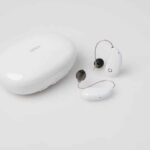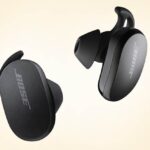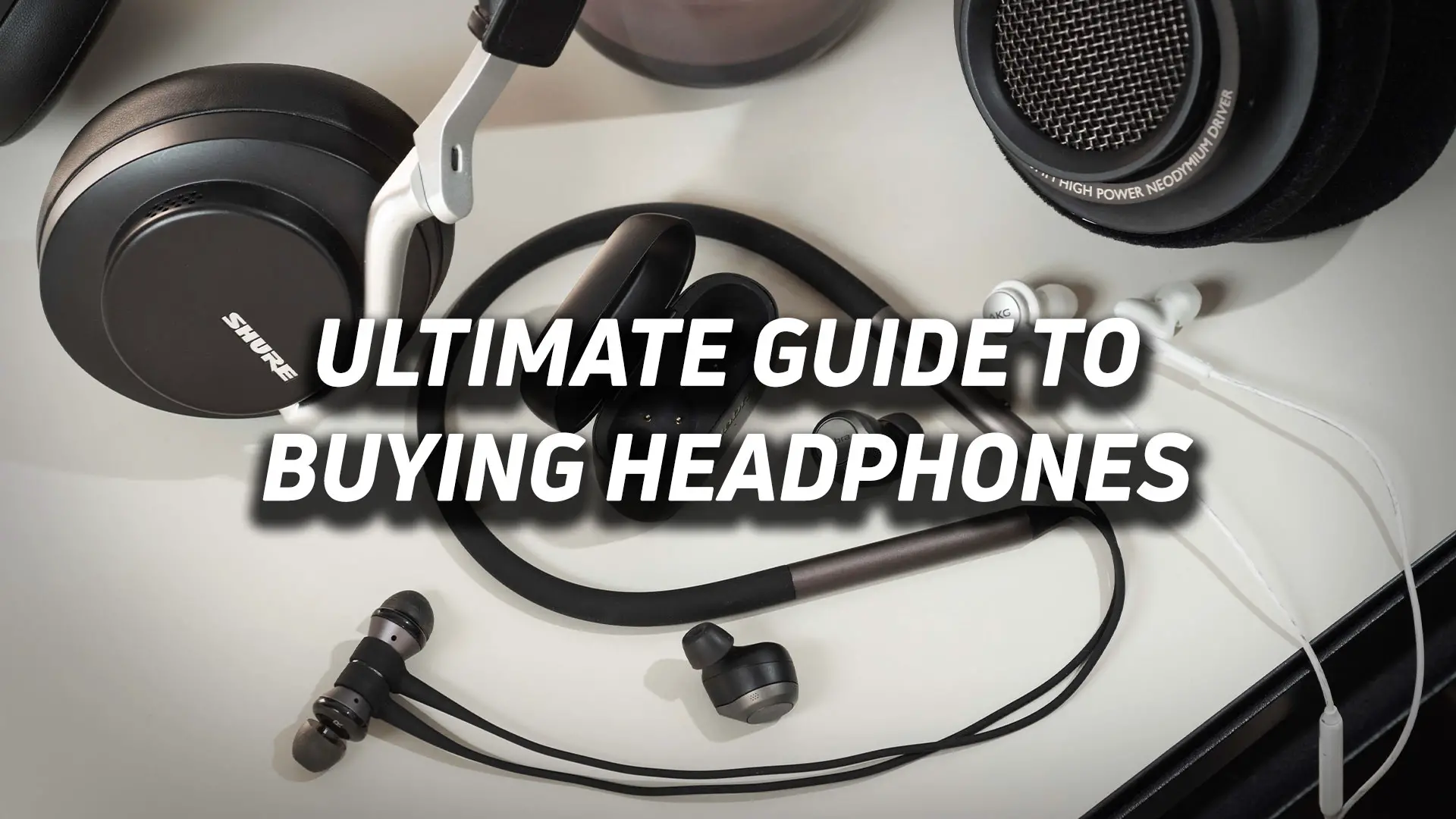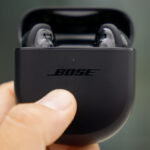Bluetooth earbuds emit low levels of non-ionizing radiation. This radiation is similar to that used in wireless routers and cordless phones.
Wireless technology has become a staple in our daily lives, with Bluetooth earbuds being a popular accessory for many. As convenient as they are for listening to music or making calls hands-free, some concerns have been raised about their safety.
Specifically, the level and impact of radiation emitted from these earbuds have come under scrutiny. Bluetooth devices, including earbuds, use radiofrequency radiation to communicate. This type of radiation is categorized as non-ionizing, considered less harmful than ionizing radiation such as that from X-rays. The earbuds’ low output typically falls well within international health guidelines, suggesting they are safe for regular use. Nevertheless, the long-term effects of exposure to this form of radiation are still being studied, urging users to be mindful of their usage habits.
The Science Behind Bluetooth Earbuds
The Science Behind Bluetooth Earbuds: Listeners worldwide are turning to Bluetooth earbuds for convenience and comfort. Understanding the science behind these devices often leads to a crucial question: do they emit radiation, and is it harmful?
How Bluetooth Technology Works
Bluetooth earbuds use radio waves for wireless communication. These waves transmit data over short distances, connecting the earbuds to your device. This process involves:
- Pairing: Earbuds connect to your device.
- Frequency-Hopping: They avoid interference from other devices.
- Low Power Signals: Earbuds use signals that are much weaker than cellphones.
Comparing Radiation Types
Different devices emit various radiation types. It’s vital to distinguish them:
| Radiation Type | Source | Energy Level |
|---|---|---|
| Ionizing Radiation | X-rays, UV Rays | High-energy, can damage DNA |
| Non-Ionizing Radiation | Bluetooth Earbuds, WiFi | Low-energy, generally considered safe |
Bluetooth earbuds fall into the non-ionizing category, which is less potent and not known to damage cells like ionizing radiation does.

Credit: www.amazon.com
Radiation Emission From Bluetooth Devices
Radiation Emission from Bluetooth Devices sparks curiosity and concern among tech users. Everyday activities now involve wireless gadgets. Earbuds are common. They sit snug in ears for hours. But do they emit radiation? Let’s explore.
Measurement Of Radiation
Radiation is unseen but can be quantified. Bluetooth devices emit non-ionizing radiation. This type is lower in energy compared to ionizing radiation from X-rays. Yet, it deserves attention. Scientists use various tools to measure these emissions. Meters assess radiation frequency, power density, and strength. The data helps in understanding the safety levels of Bluetooth earbuds.
Understanding Specific Absorption Rate (sar)
Specific Absorption Rate (SAR) is key in safety standards. It shows how much radiation the body absorbs. Measured in watts per kilogram (W/kg), it reflects the potential impact of devices like Bluetooth earbuds. A lower SAR suggests reduced exposure. Most gadgets are designed to stay within safe SAR limits set by regulations. Yet, checking the SAR value before buying is wise.
| Device Type | SAR Limit (W/kg) | Typical SAR Range |
|---|---|---|
| Bluetooth Earbuds | 1.6 | 0.2 – 0.5 |
| Smartphones | 1.6 | 0.3 – 1.5 |
All Bluetooth earbuds have SAR values readily available. Check the product manual or the manufacturer’s website. SAR levels for earbuds are often lower than for phones. Safe use guidelines can ease worries. These include using earbuds for shorter periods and opting for wired headsets.
Health Concerns And Bluetooth Exposure
Health Concerns and Bluetooth Exposure generate debates as wireless devices become more common. Bluetooth earbuds emit low-level radiation. People wonder about their safety. This post examines research and discusses potential long-term effects.
Existing Research On Low-level Radiation
Studies explore Bluetooth radiation impacts. Most research suggests low risk. Bluetooth operates at non-ionizing frequencies. These energy levels don’t damage DNA like X-rays.
- Bluetooth’s frequency ranges from 2.402 GHz to 2.480 GHz.
- The power output is typically under 0.001 watts.
- Comparatively, cell phones may emit up to 1 watt.
Researchers focus on non-thermal effects. Current data implies minimal health impacts. Yet, long-term effects remain uncertain. Studies continue to monitor exposure outcomes.
Potential Risks Of Long-term Use
Prolonged Bluetooth use raises questions. Long-term exposure could pose risks. Scientific communities pursue deeper understanding.
| Risk | Description |
|---|---|
| Auditory Impact | Evidence suggests possible nerve impacts in the ear with extended use. |
| Cognitive Effects | Some studies note changes in brain activity linked to electromagnetic fields. |
| Thermal Heat | Devices may cause local tissue warming, though insignificantly. |
Experts encourage more research. Precautionary measures can ease potential concerns. Opting for low-emission devices and limiting use may be beneficial.
Safety Standards And Regulations
When it comes to our health, safety is a top priority. With the growing popularity of Bluetooth earbuds, users are increasingly inquisitive about the radiation they emit. Let’s dive into the regulatory world to understand what safety standards are in place and how earbuds comply with these regulations.
International Safety Guidelines
Several international bodies set guidelines for the safe use of devices emitting radiation. The International Commission on Non-Ionizing Radiation Protection (ICNIRP) provides limits for exposure to electromagnetic fields. The World Health Organization (WHO) also has recommendations to guard users against potential risks.
Key guidelines include:
- Limits on Specific Absorption Rate (SAR) levels
- Guidance on safe exposure times
- Recommendations for device testing
Compliance Of Earbuds With Regulations
Manufacturers of Bluetooth earbuds must ensure their products meet legal safety standards. Compliance often involves rigorous testing and adherence to SAR limits set by regulatory agencies. This helps in preventing overexposure to radiofrequency radiation.
Ways earbuds comply:
- Meeting international safety standards
- Displaying SAR values in product manuals
- Engaging in regular compliance checks
In summary, safety regulation in the industry is robust, with stringent standards and routine compliance checks ensuring that the Bluetooth earbuds remain within safe radiation levels for everyday use.
Choosing Safer Bluetooth Earbuds
Bluetooth earbuds bring us the delight of wireless audio convenience. Yet, concerns about radiation exposure linger. Opting for safer Bluetooth earbuds can lower those worries. Understanding earbud radiation safety is vital.
Tips On Reducing Radiation Exposure
Here’s how to minimize risks while enjoying wireless earbuds:
- Use them less often – Limit time using Bluetooth devices.
- Keep your distance – When not in use, keep earbuds away from your body.
- Opt for wired headsets – Switch to wired options when possible for longer use.
- Turn off when not in use – Disabling Bluetooth reduces unnecessary exposure.
Features To Look For In Low-radiation Earbuds
Consider these features when shopping for safer earbuds:
| Feature | Description |
|---|---|
| Air Tube Technology | Reduces radiation by using air to convey sound. |
| Low SAR Value | Search for earbuds with low Specific Absorption Rate (SAR). |
| Shielded Wires | Look for wires with additional shielding to block emissions. |
| Automatic Off-Switch | Earbuds that turn off Bluetooth after disconnection reduce radiation. |

Credit: www.goldenstepsaba.com
Best Practices For Bluetooth Earbud Use
Let’s explore best practices for Bluetooth earbud use.
Managing the time spent with earbuds is key to maintaining good ear health. Find out how you can enjoy your audio safely!
Limiting Usage Duration
Long hours with earbuds may not be good for your ears. Follow these tips:
- Set a timer for listening periods. Short breaks help your ears rest.
- After one hour of use, take at least five minutes off.
- Avoid using earbuds all day. Give your ears time without them.
Alternative Listening Options
Different devices can help reduce earbud usage. Check out these alternatives:
| Option | Benefit |
|---|---|
| Speakers | Less direct radiation |
| Over-ear headphones | More space from the ear canal |
| Air tube headsets | Minimize radiation exposure |
Choose these methods when possible for a safer listening experience.
:max_bytes(150000):strip_icc()/Health-GettyImages-1277414711-33d6a5a4f6304e6596513e25bbee5e58.jpg)
Credit: www.health.com
Conclusion
Wrapping up, concerns surrounding Bluetooth earbud radiation are valid. But, evidence indicates the emissions are well below harmful levels. To stay cautious, limit extended use and opt for wired alternatives when possible. Embrace technology wisely, prioritizing health as we tune into life’s soundtrack.

Hello, I am Howard E. Glover, the CEO, and founder of soundsvia.com We Are Talk About Audio Sounds Systems like Headphones, Earbuds, Headset, and Earphones






